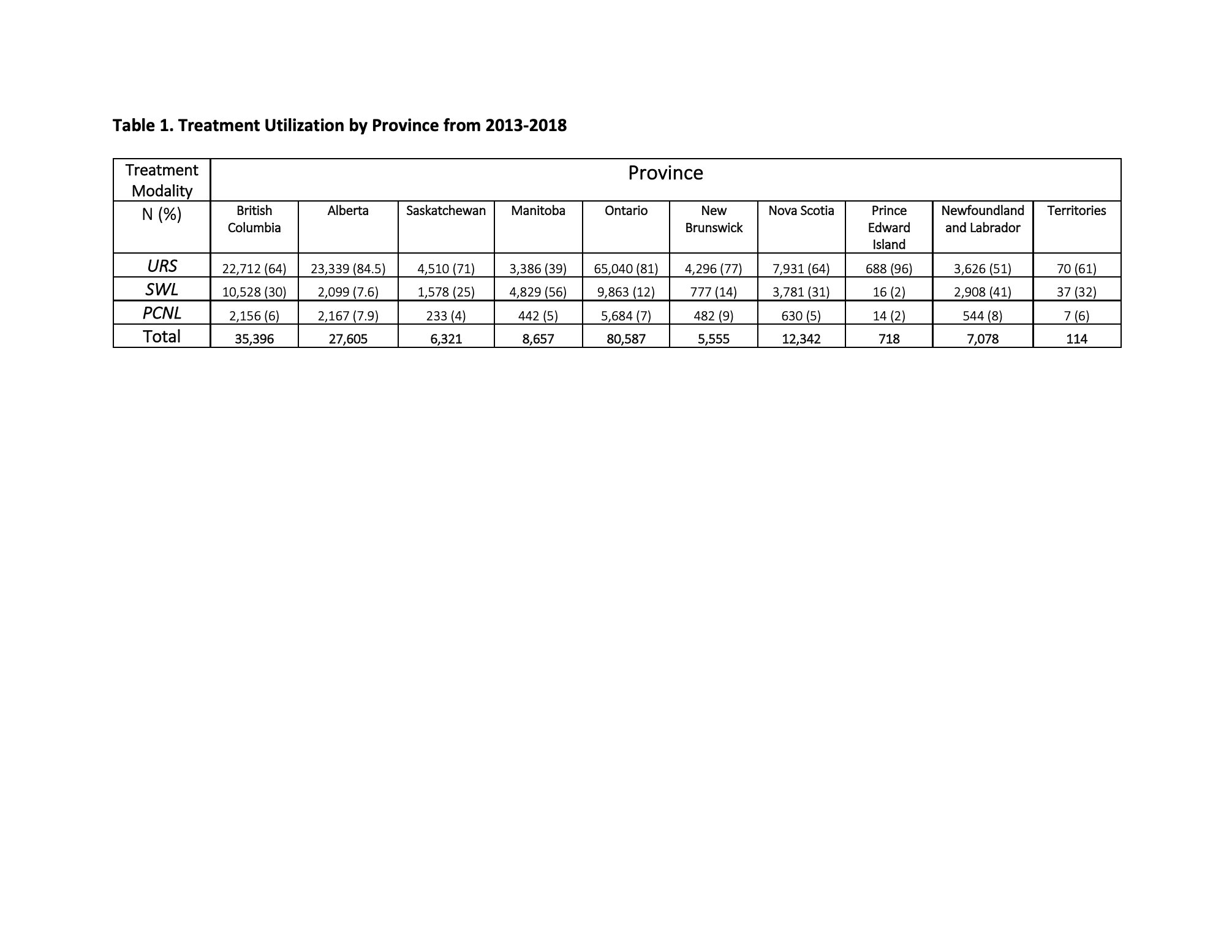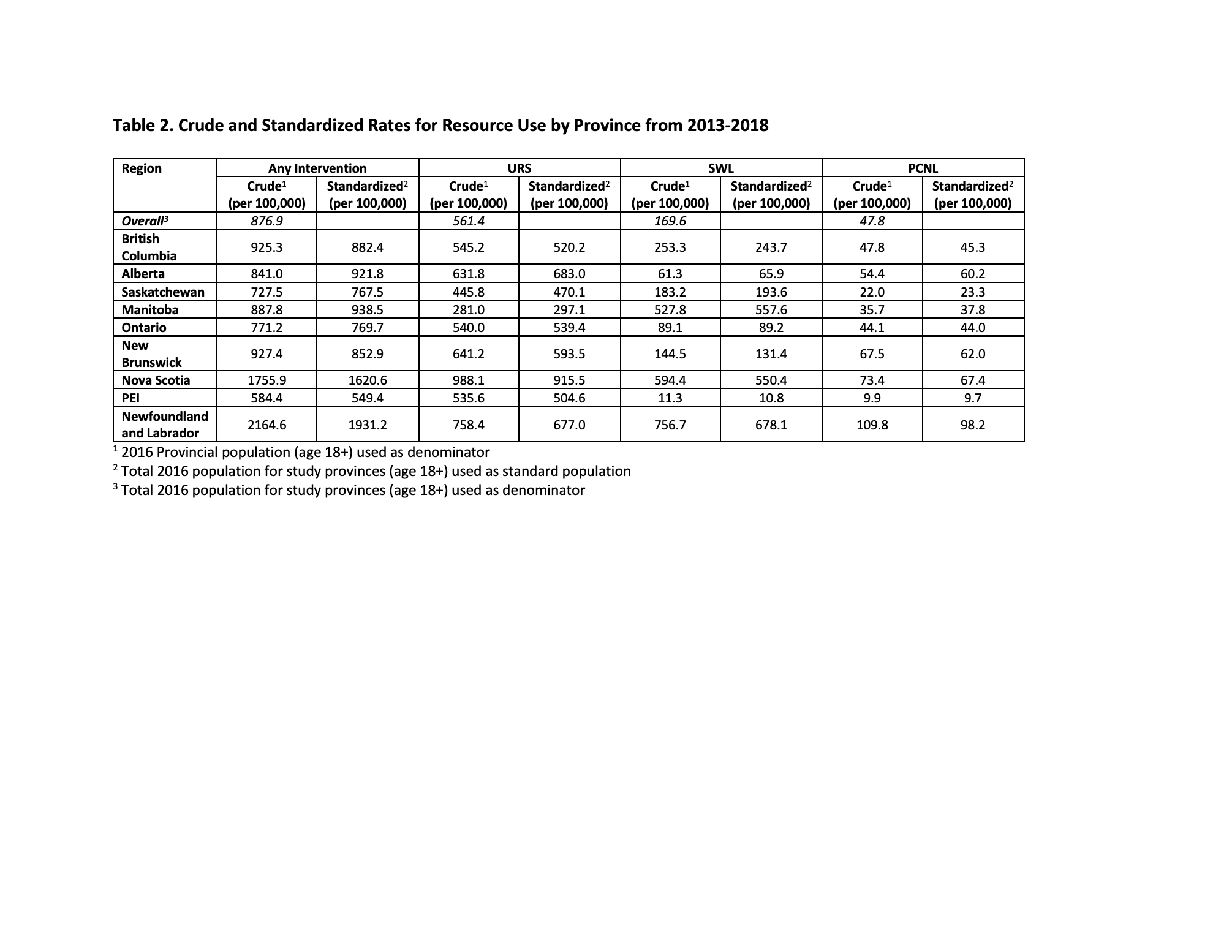Back
Poster, Podium & Video Sessions
Moderated Poster
MP26: Stone Disease: Epidemiology & Evaluation I
MP26-13: Incidence and Trends in the Treatment of Kidney Stones in Canada: A Population-Based Cohort Study
Saturday, May 14, 2022
10:30 AM – 11:45 AM
Location: Room 225
Michael Ordon*, Toronto, Canada, Andrea Lantz Powers, Halifax, Canada, Ben Chew, Vancouver, Canada, Jason Lee, Michael Kogon, Toronto, Canada, Sri Sivalingam, Cleveland, OH, Shubha De, Edmonton, Canada, Naeem Bhojani, Sero Andonian, Montreal, Canada
- MO
Michael Ordon, MD
MD, MSc, FRCSC
University of Toronto
Poster Presenter(s)
Introduction: Our aim was to assess the incidence of acute care kidney stone events, trends in the surgical treatment of stones and the demographics of stone formers in Canada, as no such data exists. This data is important for prevention and resource planning.
Methods: We conducted a population-based retrospective cohort study using administrative data from the Canadian Institute for Health Information. We included Canadian residents age >18, outside of Quebec, who presented between January 1, 2013-December 31, 2018, with an acute care kidney stone event. This was defined as a stone resulting in hospital admission, emergency room visit (in select provinces) or stone intervention, specifically shockwave lithotripsy (SWL), ureteroscopy (URS) or percutaneous nephrolithotomy (PCNL). One stone intervention per 90 days for each person was included. Demographics and treatment utilization were reported by year and province.
Results: There were 471,824 stone events including 184,373 interventions. The number of stone events increased from 359/100,000 in 2013 to 393/100,000 in 2018. The median age was 53 (IQR 41-65) and 59.9% were male. Across Canada, the crude rate for stone intervention was 877/100,000. The age and gender standardized rate for intervention was highest in Nova Scotia (NS) and Newfoundland and Labrador (NL) and lowest in PEI. The most common intervention in Canada was URS (73.5%) followed by SWL (19.8%) and PCNL (6.7%). The percent utilization of SWL was highest in Manitoba (MN), NL and lowest in PEI and Alberta (AB). The percent utilization of URS was highest in PEI and AB and lowest in NL and MN (Table 1). The standardized rate for URS was highest in NS, whereas for SWL and PCNL it was highest in NL (Table 2).
Conclusions: Our study provides the first population-based data on the demographics of stone formers and treatment trends in Canada. There has been a 4% increase in acute care kidney stone events over 5 years. Those presenting to hospital or requiring intervention for a stone are more likely to be male, between the age of 41-65 and undergo URS.
Source of Funding: Canadian Endourology Group


Methods: We conducted a population-based retrospective cohort study using administrative data from the Canadian Institute for Health Information. We included Canadian residents age >18, outside of Quebec, who presented between January 1, 2013-December 31, 2018, with an acute care kidney stone event. This was defined as a stone resulting in hospital admission, emergency room visit (in select provinces) or stone intervention, specifically shockwave lithotripsy (SWL), ureteroscopy (URS) or percutaneous nephrolithotomy (PCNL). One stone intervention per 90 days for each person was included. Demographics and treatment utilization were reported by year and province.
Results: There were 471,824 stone events including 184,373 interventions. The number of stone events increased from 359/100,000 in 2013 to 393/100,000 in 2018. The median age was 53 (IQR 41-65) and 59.9% were male. Across Canada, the crude rate for stone intervention was 877/100,000. The age and gender standardized rate for intervention was highest in Nova Scotia (NS) and Newfoundland and Labrador (NL) and lowest in PEI. The most common intervention in Canada was URS (73.5%) followed by SWL (19.8%) and PCNL (6.7%). The percent utilization of SWL was highest in Manitoba (MN), NL and lowest in PEI and Alberta (AB). The percent utilization of URS was highest in PEI and AB and lowest in NL and MN (Table 1). The standardized rate for URS was highest in NS, whereas for SWL and PCNL it was highest in NL (Table 2).
Conclusions: Our study provides the first population-based data on the demographics of stone formers and treatment trends in Canada. There has been a 4% increase in acute care kidney stone events over 5 years. Those presenting to hospital or requiring intervention for a stone are more likely to be male, between the age of 41-65 and undergo URS.
Source of Funding: Canadian Endourology Group



.jpg)
.jpg)